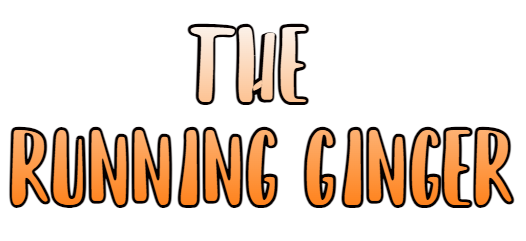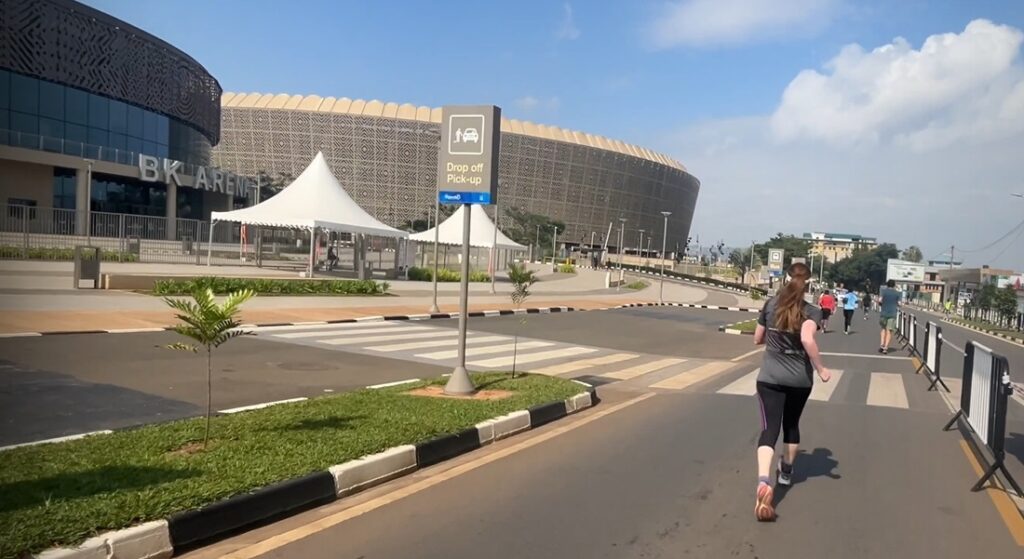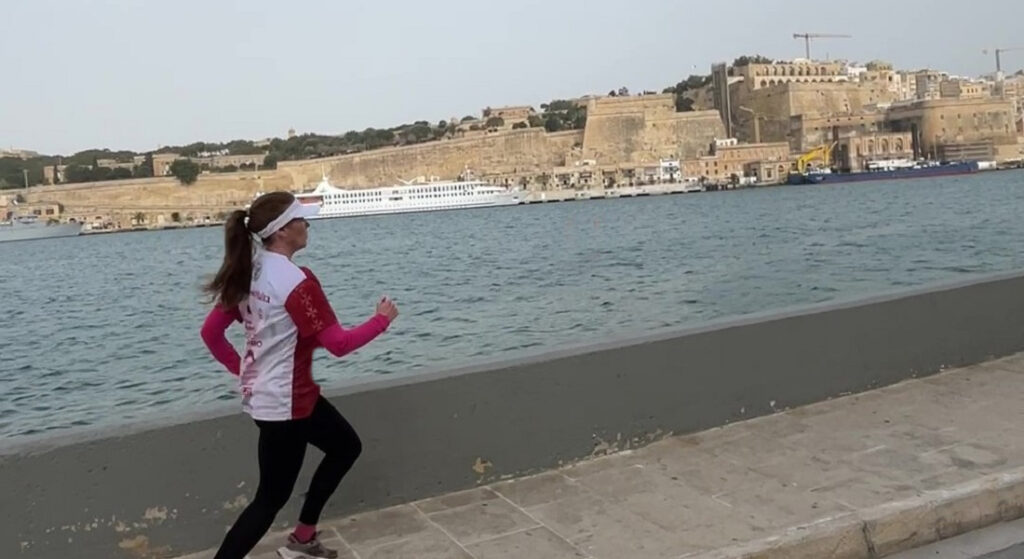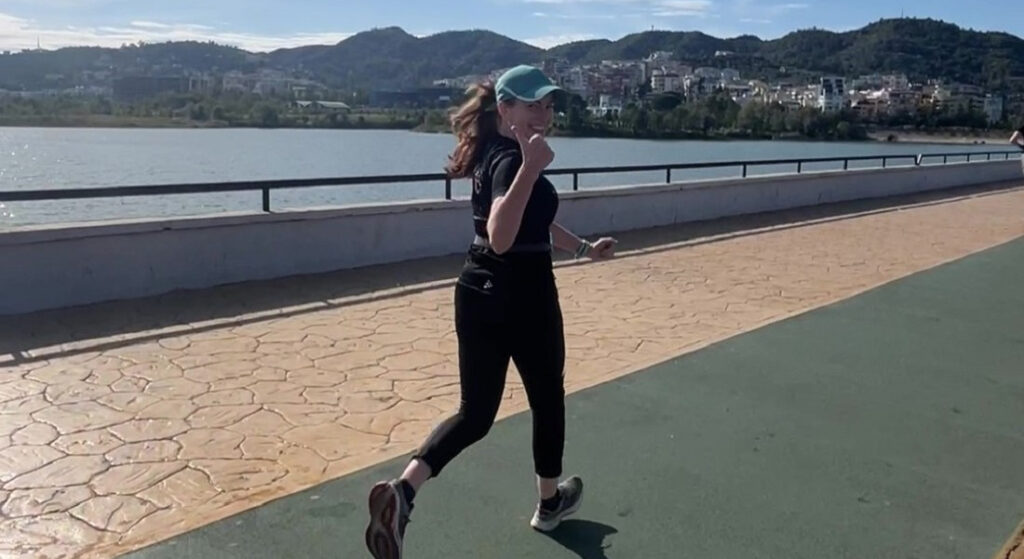Berlin, Germany. September 2018
Thinking of running the Berlin Marathon? 🎉
You’re not alone—and it’s one of the smartest choices you can make as a runner. This World Marathon Major is famous for its fast, flat course, stunning city landmarks, and electric atmosphere. Whether you’re chasing a new personal best, ticking off a bucket list race, or planning your first marathon abroad, Berlin delivers on every level.
In 2018 we ran the 42 kilometers through the streets of Berlin, raced to the iconic Brandenburg Gate, and witnessed Eliud Kipchoge stop the timer at 2:01:09, the world record at the time, and here’s our experience!
From the Brandenburg Gate finish line to the unbeatable crowd energy in Kreuzberg, this blog will help you get the most out of your Berlin Marathon experience.
Whether you’re already signed up or just starting to dream about it—this is the place to start. 🏁
TLDR; “Too long, didn’t read”
- I just want to run! Take me to RACE.
- I have 1 minute. Take me to USEFUL INFORMATION and FAQs.
- Running is my excuse for travelling. Take me to TRIP.
- Running is my excuse for eating. Take me to CARBOLOADING.
- I want to know what to read in the plane. Take me to ONE BOOK.
🌍 The trip 📷; what to see in Berlin if you are there for marathon weekend
We ran the 2018 Berlin marathon just spending one weekend there.
We traveled, ran and came back home. This is an option that many runners opt for, thanks to the many connecting flights between the German capital and multiple European cities.
If you’re doing like us and spending a weekend in Berlin for the marathon, there’s plenty to explore beyond the race itself.

Start with a stroll through the iconic Brandenburg Gate 🚪, where the marathon finishes, and soak in the history of this amazing city. Nearby, you can visit the Reichstag building 🏛️ with its stunning glass dome offering panoramic views of Berlin’s skyline.
Don’t miss the Memorial to the Murdered Jews of Europe 🕯️, a powerful and moving tribute just a short walk away.

A visit to the Berlin Wall is a must too — fragments of the wall still stand throughout the city, reminding visitors of its dramatic past and the city’s journey to reunification.

For art lovers, the East Side Gallery 🎨 is a must-see: a colorful open-air gallery painted on the Berlin Wall remnants, telling stories of freedom and change.
After the race, take some time to relax and enjoy Berlin’s vibrant neighborhoods.
Kreuzberg offers lively street art, cozy cafés ☕, and delicious international eats 🌯, perfect for refueling. If you want a more peaceful escape, the Tiergarten park 🌳 is ideal for a gentle walk or stretching your legs post-race.
Berlin is a city full of surprises—perfect for combining racing and sightseeing!
The Marathon Expo
Saturday was all about the Berlin Marathon Expo, a must-visit event for every runner gearing up for race day.
The expo was held at the historic old Tegel airport, famous for its role in the Cold War airlift that supplied West Berlin.
The location gave off a distinct East Berlin vibe, with its large, gray buildings, peeling walls, and concrete surroundings that tell stories of the city’s past.
Inside the expo, creativity and marathon spirit were everywhere. Kids enjoyed a fun workshop where they got to draw the marathon 🎨, while two huge pavilions featured the usual marathon merchandise stands alongside vintage propeller planes ✈️…
And even a beer garden on the old airstrip 🍺! Though the beer was non-alcoholic, perfect for a sporting event!
We picked up our race essentials like the technical shirt, bib number, timing chip, wristband (which I wore proudly for weeks!), and a finisher shirt that could be pre-ordered with registration.
We chose our hotel carefully, less than two kilometers from the Tiergarten, so we could easily walk to the start line on race morning 🚶♂️. Bonus: the German Resistance Memorial was right across the street, a powerful reminder of Berlin’s history.
Many hotels during marathon weekend go the extra mile, offering marathon-focused services like full buffets loaded with high-carb meals 🍝🍞 for dinner and breakfast to help runners carb-load and fuel up properly before the big day.
🍜 What to eat in Berlin if you are running the marathon
Carboloading 🍝
Before the marathon, fueling up with the right carbs is key to having plenty of energy on race day.
In Germany, classic carb-rich dishes like pretzels 🥨, spätzle (soft egg noodles) 🍝, and hearty potato pancakes 🥔 are great options.
Berlin also offers delicious rye bread sandwiches loaded with fresh veggies and cheeses 🥪, perfect for slow-release energy. Don’t forget to hydrate with a refreshing glass of Apfelschorle 🍎—a popular mix of apple juice and sparkling water that’s both tasty and energizing!
For the pre-race carbo-loading, we searched for Italian restaurants to eat pasta 🍝, ideally close to Alexanderplatz and its iconic communications tower, so we could do some sightseeing.
We found one, but it was not easy, because the gastronomic offer of the area is mainly … döner kebabs. Berlin is, in fact, the birthplace of the döner.
Protein Recovery 🌭
After crossing the finish line, it’s time to focus on protein and recovery.
Traditional German dishes like Rinderroulade (beef roulade) 🍖 or Bratwurst sausages paired with sauerkraut offer a satisfying protein boost to help muscles rebuild. In Berlin, you can find amazing Currywurst 🍛, a spicy sausage dish that’s both flavorful and filling.

For a lighter option, try quark (a creamy dairy product) with fresh fruit 🍓—rich in protein and gentle on the stomach after a long run. Pair it with a warm herbal tea ☕ to soothe your body and celebrate your achievement!
We left the Döner kebabs 🍢 for after the race. They are very tasty, but also very high in calories, fat, and sodium. A standard-sized chicken or lamb kebab has up to 800 calories, of which 80g are carbohydrates, 50g are protein and 40g are fat.
Another caloric bomb that will fuel your marathon is Currywurst, a Berlin specialty. Sliced sausage 🌭 served with a spiced ketchup sauce and topped with curry powder.
🏃♀️ The Marathon🏃♂️
We got up at 6am, and took advantage of the breakfast buffet, full of runners and high-carb foods.
The temperature was going to rise to more than 15°C/59°F degrees by mid-morning, but in the morning it was cold, so we covered ourselves with some thermal blankets that we could leave behind at the start point.
We dressed in short sleeves / tank top. By the way: in a marathon, you see all kinds of clothes… but in this one I swear I saw an elderly woman in panties! Either that, or her sport shorts had a very “cute” aesthetic.
We arrived at the Tiergarten and as we passed the boxes for the fastest runners, we saw a group of elite runners stretching. With their wiry bodies, they were unmistakable. And there he was, Eliud Kipchoge, who smiled and even allowed himself to be photographed with some of the amateur runners.
At 9:15 we saw the elite runners take off, as it was broadcasted in the big screens. “Chariots of Fire” played and those of us in the slowest boxes inched our way to the starting line.
Then, the speaker gave us instructions (we were in Germany, so the instructions were man-da-to-ry) and suddenly 45.000 souls started the “Viking clap”. It’s just awesome.
Even now, as I write these lines, I am moved when I remember it.
Although, what I experienced right afterwards was more prosaic: a Spaniard easily gulping down two gels, two American girls streaming live their dances with a lot of makeup on (how can the make up last 4+ hours, I wonder?)… and a German woman choosing to urinate on the grass instead of queuing for the toilets.
First kilometers
The marathon is perfectly organized. In addition to being the fastest in the world, you pass in front of famous monuments and buildings.
And the marathon photographers are perfectly positioned to take pictures of you in front of them, as can be seen in the pictures I included: it is simply perfect.
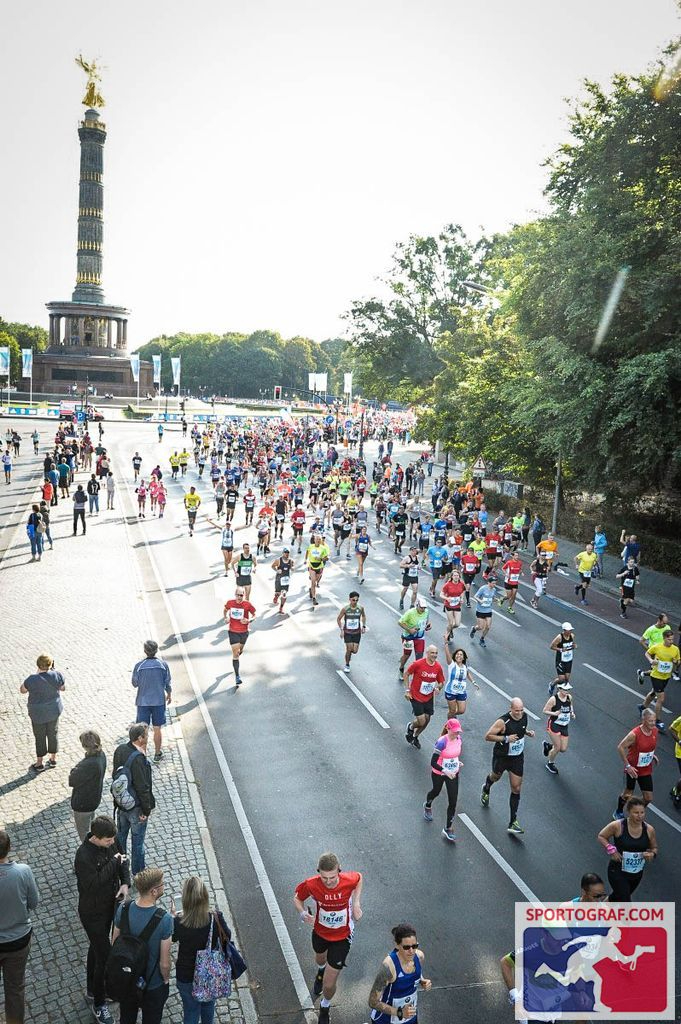
The route takes you around the Victory Column and then past the historical Reichstag.
In the streets, there are many people cheering, with children and their typical “tap here for power” signs. Running with us we saw mexicans shouting “¡Viva México!”, a group of Thais, another of Swiss… more from Costa Rica, Namibia, Singapore, Zimbabwe… an American dressed as “Captain America”, a Chinese as a panda bear, and a Catalan with a “caminem i fem historia” t-shirt.

One person was running while jumping rope! A group of three were dressed as musketeers, and another of six, as characters from Asterix (the one who was dressed as Obelix even had a fake menhir!)
10 to 30 kilometers
As we progressed, we realized that the course is indeed very flat. A sign on a bridge reminded us that “you are on the fastest route” while in the audience, a spectator advocated that “pain is only the French word for bread”.
Onlookers do cheer, although in a more discreet way than in other marathon majors. There are also music bands throughout the race: I remember a soloist singing “a capella” in Turkish who seemed out of tune. We joked about it: “he makes you ran faster, as you want to leave his cooing behind”.

On a private balcony, some people played Madness’ “House of fun” at full volume, sparking the enthusiasm of many runners, some of whom did a kind of impromptu “ska” while running …
We kept running through icons in Berlin; we accumulated kilometers while seeing the memorial church of kaiser Wilhelm, bombed during the WWII, or the many museums.

And then, at kilometer 41, we made one last turn and saw the Brandenburg Gate! “Let’s race to the gate!” (which is the motto of the marathon)
Last kilometers – the Fridolin “High five” incident!
In the last kilometers, there were cameras, a non-alcoholic beer offer (really?) and lots of entertainment.
On a personal note, Roger almost caused an incident to go to do a high-five with Fridolin! He did a high-five indeed and upseted a few runners at the same time!
Fridolin, you might ask? Fridolin Flink is the mascot of the Berlin Marathon. He is a friendly, cartoon-like figure that is often seen at the event, including during the press conference and alongside the leading runners:

We finished on a high, racing to the gate and super excited, while the loudspeakers announced that this marathon had been the fastest in history!

Eliud Kipchoge had set a new world record by more than a minute, something that had not happened in more than 50 years!

Useful information
🏆 Berlín Marathon (42K). First edition: 1974
🌐 Berlin Marathon Website: https://www.bmw-berlin-marathon.com/en/
🏃 Number of runners: around 45.000.
🗓️ Third week of September in Berlin, Germany, Europe.
👟 Urban: bring shoes for asphalt.
✅ One of the fastest marathons worldwide, if not the fastest.
✅ Perfect organisation. And one of the Abbott Marathon Majors.
🧠 Berlin Marathon – FAQs
🔹 When is the Berlin Marathon 2025?
📅 The race is scheduled for Sunday, September 28, 2025. It typically takes place in late September, but be sure to check the official site for confirmation.
🔹 How do I get to the start line?
🚇 The starting area is on Straße des 17. Juni, near the Brandenburg Gate. Your bib usually includes free public transportation access on race day—super convenient!
🔹 What’s the course like?
🗺️ Fast, flat, and legendary! The route winds through Berlin’s most iconic landmarks, making it perfect for personal bests and first marathons alike.
🔹 Is there a cut-off time?
⏱️ Yes—runners must finish within 6 hours and 15 minutes of their wave start. Stick to your pace and enjoy the city!
🔹 What’s the weather usually like?
🌤️ Expect mild, runner-friendly conditions: 10–18°C (50–64°F). Mornings can be chilly, so layer smart!
🔹 Are there pacers?
🎈 Yes! Pacers are available for a variety of finish times. Look for their signs or balloons in your starting corral.
🔹 What should I know about hydration and nutrition on the course?
💧 Aid stations are every few kilometers, offering water, electrolyte drinks, bananas, and energy gels. Pay extra attention to fueling around KM 25–35!
🔹 Can spectators cheer along the course?
🎶 Definitely! Berlin’s crowds are electric, with cheering zones, live music, and a ton of support—especially in Kreuzberg, Mitte, and near the finish.
🔹 What’s at the finish line?
🥇 You’ll get a medal, post-race snacks, and serious runner euphoria. The finish area is in Tiergarten, just past the Brandenburg Gate.

🔹 What should I do after the race?
🍻 Celebrate like a Berliner! Grab a currywurst, a cold beer, or stroll through sights like Museum Island or the East Side Gallery. You’ve earned it.

Map
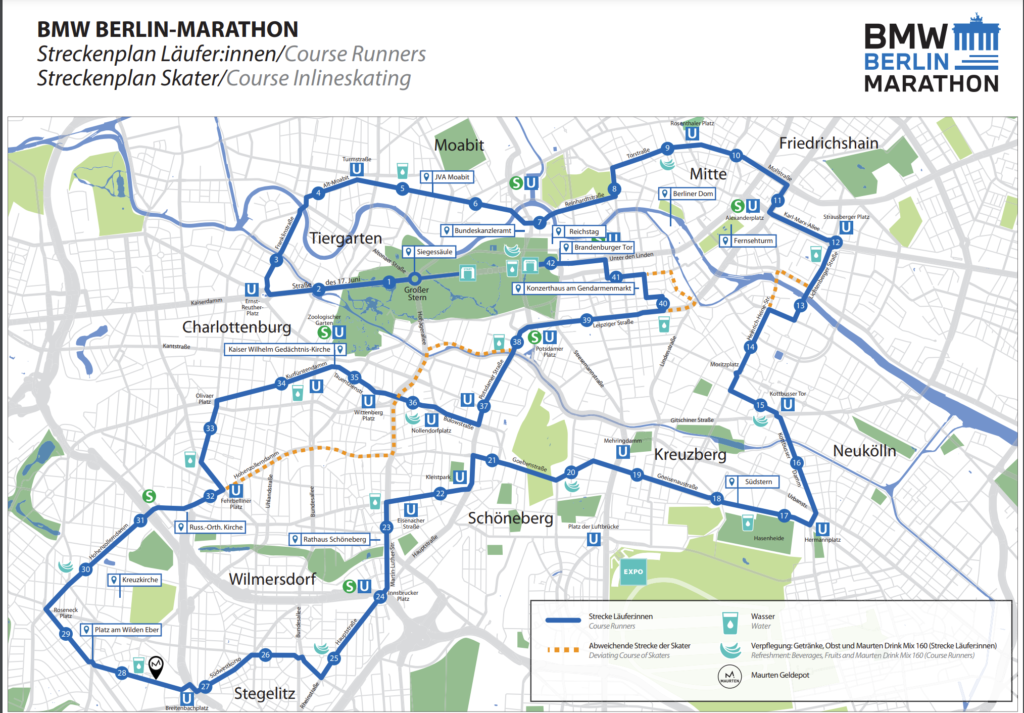
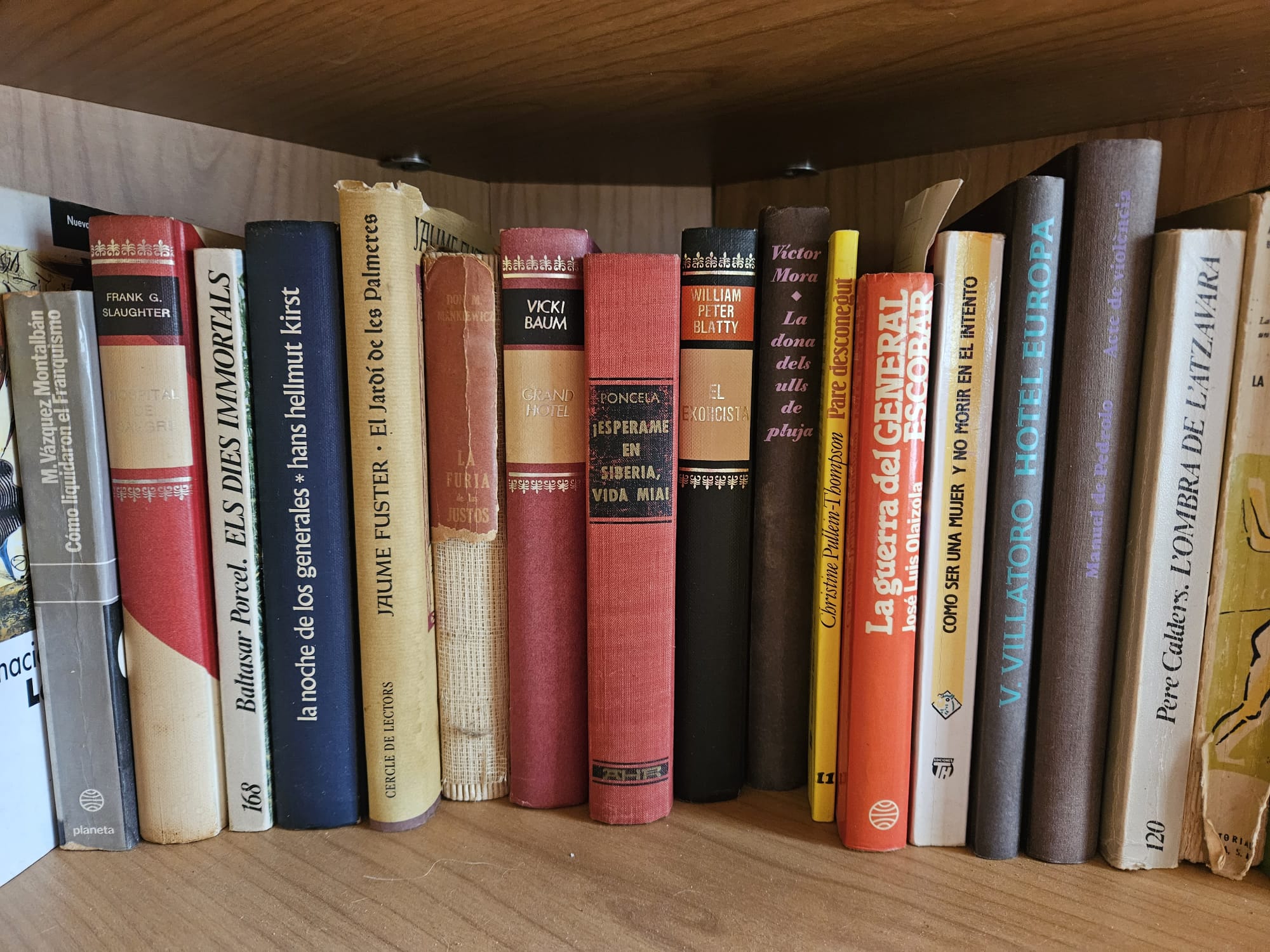
One book
📖 “My Century”, by Gunter Grass
For this trip, I read again “My Century” by Gunter Grass, a book I had read about ten years ago, and which consists of 100 chapters, with different stories, one for each year of the 20th century. An amazing book, well documented, harsh and insightful.
I will focus here on chapter 42, because of the 42 kilometers 😏 . In this chapter the following sentence is to be found:
I wanted to go back to the front. There he knew at least what he had to count on. I cried, I literally cried, I assure you, when I saw my Cologne from Deutz. It was still smoking and only the cathedral was still standing.
Gunter Grass, “My century”
[…] Some spoke then of Darmstadt and Würzburg, of Nuremberg, Heilbron. And from Berlin, naturally.
These words describe the Allied bombing raids during that year. And with these words, the image of Kaiser Wilhelm’s church, in front of which we ran, returns to me.

Summary:
A collection of one hundred inter-linked stories celebrating the twentieth century, by Germany’s most eminent contemporary writer. As the sequence of stories unfolds, a lively and rich picture emerges, an historical portrait of our century in all its grandeur and in all its horror.
⭐⭐⭐⭐⭐

To know more…
| 📖 “Berlin AlexanderPlatz”, Alfred Dobins. 🎬 “Wings of Desire (The sky over Berlin)”, Wim Wenders, 1987. 🎬 “Good bye Lenin”, Wolfgang Becker, 2003. |
“Berlin AlexanderPlatz”, by Alfred Dobin
Not an easy book, but interesting as it captures the difficulties of lower class people in Berlin in the 1920s. A time where Germany was struggling after WWI, and that helps understanding what happened a decade later.
⭐⭐⭐⭐⭐
